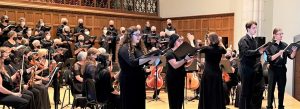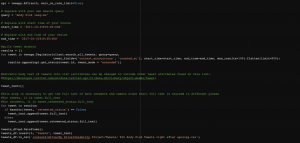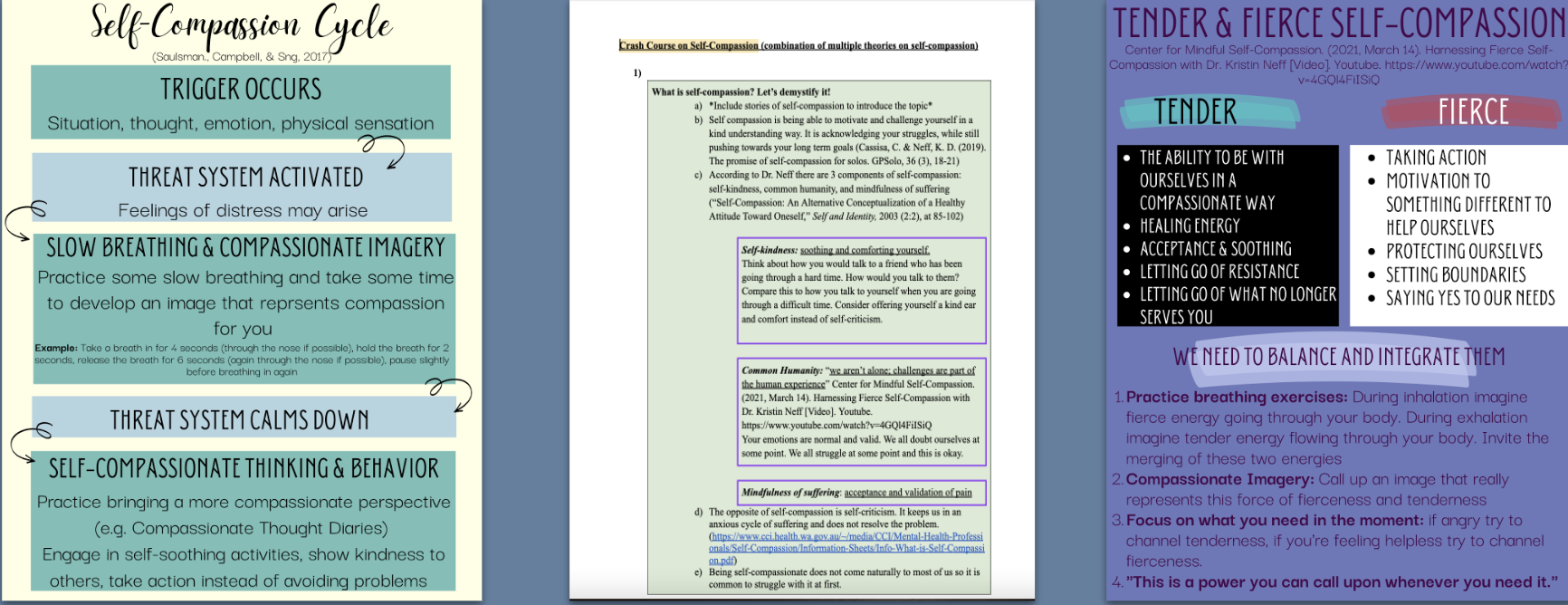Over the past summer, migration patterns, labor and marriage markets in Mexico were my main focus; as well as my process to learn data analysis and research techniques with large databases. These databases were used in order to conclude one question: Did men’s migration or lack thereof, after the 2008 recession, affect women’s marriage markets and labor markets in Mexico? The four databases— ENADID, MCAS, Mexican Census, and ACS— enabled us to make a reliable conclusion about Mexican migration. With that information, we could determine where in the United States Mexican migration happens as well as from where in Mexico Mexican migration starts. The MCAS database is conclusively made up of the Matrículas Consulares issued, a document issued by the Mexican government that provides outside countries, such as the US, proof of Mexican nationality. After acknowledging the similarity with the other databases, using MCAS, we could determine whether migration of working age Mexicans decreased or increased after the recession. We compiled maps of Mexico which included data from each source: ENADID, MCAS, etc.; this was done in order to make conclusions about where Mexican migration starts and to determine the highest sending states. We compiled many graphs not included in the presentation, such as average women’s schooling per year, average men’s age per year, and marriages in municipalities based on high/low migration states, to name a few. These graphs were made in order to understand the marriage markets in Mexico, or essentially, how marriages were affected because of the change in migration to the United States. All of the above helped us gather assumptions about women’s marriage markets and labor markets in Mexico, and although I didn’t necessarily get to answer the question because of the many embedded factors, I can’t wait to continue working on the project this coming semester!
Category Archives: Ford 2022
Meritocracy or Factionalism in China: Social Network Analysis of Chinese Official Promotions
The tournament competition hypothesis is a prevailing explanation regarding China’s economic rise. It theorizes the existence of a meritocratic system that favors local leaders who are able to promote faster growth, thus leading to able officials being selected to manage the economy. This summer, we worked with Professor Fubing Su to study the core piece of the tournament competition: official promotion. We look into the possibility of factional politics, a contrasting argument against the meritocratic view. To test these two competing hypotheses, this project builds a database of politburo standing committee members and provincial government officials, including biographical information and all positions throughout their careers. This will allow us to code officials’ career path (promotion or demotion) and their network/factional ties.
The first step of our research is data collection. We updated biographical information of current provincial government officials to a database compiled in the past decade. We identified the names of these officials and located their full biographies on baike.baidu.com, a popular website in Chinese. Then we followed a system of codifications to enter all relevant information into the database and checked the accuracy of our codings after the first few trials to make sure that all information followed standard formats.
We conducted our research remotely and were able to meet regularly online using Wechat. But it also had some downsides. China’s strict covid policy demanded all international travelers to be quarantined in hotels for two weeks. Unfortunately, one of us was locked in this regime for almost two months because her tests were unclear. This impaired the progress of our projects because hotel networks were poor and access to google platforms, where our collaborated project was stored, was restricted. Thanks to Professor Howlett and Alix, we were given an extension to continue our work. We aim to cross-check all entries again for standardization and to run our Rstudio codes to identify all network ties between politburo standing committee members and provincial leaders afterwards. This would complete all tasks in our original proposal.
Community Engagement: Choral-Orchestral Practice and Performance through the music of J.S. Bach
This summer, I worked with Professor Christine Howlett to study community engagement through choral practice. For the first half of this research program, I helped run BachFest, a choral and orchestral festival with community singers. This included helping to organize rehearsals and materials, as well as having an administrative role in the festival’s planning and execution. I also got to participate in the choir. In addition, I wrote researched program notes about the background and history of the pieces that were performed.

A snapshot from the BachFest performance on June 26, 2022. Photo courtesy of Kevin T McEneany and The Millbrook Examiner.
After BachFest, I had the pleasure of interviewing members of Cappella Festiva, a community choir which Professor Howlett directs, as well as members of community choirs in my hometown of Fairfax, Virginia. These interviews were conducted via Zoom and then transcribed. Though the participants came from various backgrounds and had a variety of musical appreciation, education, and experience, all of the interviewees noted the profound impact that choral singing (and music in general) has had on their well-being, with many also pointing to its positive social effects.
In tandem with these two projects, I read many scientific studies pertaining to the effects of choral singing on mental health, well-being, and community engagement. These studies echoed what we found in our interviews, namely the power of singing as a stress relief, an escape, a social vehicle, and a labor of love. As a singer myself, I can corroborate these points from personal experience, but seeing the positive effect of community singing in real, concrete terms, from observation, research, and hearing others’ personal experiences, reminded me of its importance.
Professor Howlett and I have decided to continue this project into the 2022-2023 academic year, during which we will conduct more interviews and more research in other fields to find a holistic picture of the power of community singing on well-being.
Summary for CNN approach for NLP analysis over charity groups -Huaihan
Climate Solutions and Climate Careers: Mapping the Terrain
From students to working professionals, many people want to address climate change with their career, but do not know where to begin. To help these people understand how they can help, our team – Cherrie Chang, Melisa Calderon and Professor Seidman – constructed the website, Climate Solutions and Climate Careers. Our website consists of two major sections, Climate Solutions and Climate Careers, each presenting an engaging roadmap surveying a part of the current climate change landscape. Climate Solutions overviews a range of practical solutions to climate change, from installing heat pumps in buildings to practicing regenerative agriculture; and Climate Careers details how any working professional can use their existing career to address climate change, and how a student can choose a career that will have an impact on climate. Over this summer, we worked together to design and construct the website so that it is visually inviting, accessible and informative. In addition, we developed a database that organizes climate tech startups by sector, such as renewable energy, transportation, and waste. The database helps people explore what is already being done to combat climate change.
By the end of the project, we developed a beta version of the website and the database. In both its content and its construction, our website was a great opportunity for us to learn about the intersection of technology and environmentalism. In creating it, we ourselves learned how to use our respective skill sets to contribute to the fight against climate change, and we hope our website shows how you can as well. You can visit our website at: https://climatesolutions-careers.org/
Philosophies of Pedagogy
This summer, I (Christine Kerrol Chung ’24) worked with Professor Osman Nemli in the Philosophy Department on a project called “Philosophies of Pedagogy”. The purpose of this project was to critically understand the nature of education, including its purpose and execution, before moving on to adapting theory into practice by shaping Professor Nemli’s pedagogy in future classes.
We began by reading some key writing in the field of pedagogy. Particular attention was given to bell hooks’ “Teaching to Transgress”, Paulo Freire’s “Pedagogy of the Oppressed”, and Bettina Love’s “We Want to Do More Than Survive” on engaged pedagogy and abolitionist teaching. We also explored the philosophical origins of education through Plato’s “Laches”, and “Meno”, as well as Jacques Ranciere’s “The Ignorant Schoolmaster”. Through biweekly discussions, Professor Nemli and I became heavily inspired by hooks, Freire, and Love’s abolitionist teaching approach.
I then analyzed Professor Nemli’s past CEQs to look for trends in his pedagogy that can be shaped by our readings. A current finding is that although students become inspired by the material, there is a desire for key concepts to be further fleshed out instead of focusing on individuals.
Applying theory to practice, Professor Nemli and I developed two draft syllabi that considered this feedback and engaged pedagogy. We decentered the cult of the individual from syllabi by structuring the content based on key concepts rather than a canonical figure. This was inspired by Ella Baker’s abolitionist approach to protests. We then created assignments that encouraged students to critically engage with the pedagogy of the class; for example, a peer editing assignment where students can have the space to write about the merits/drawbacks of peer editing.
Going forward, Professor Nemli and I will co-write a paper on Credentialism in the USA, which is currently in the research stage.
Cyber Attacks and US Banks
Cyberattacks are becoming a larger part of what all industries, not just financial firms, have to deal with. Cyber risk exposure has an economically and statistically significant negative effect on the stock market performance of affected firms. Additionally, there is evidence of contagion effects: idiosyncratic firm-level cyber risk has the potential of spreading through interconnected financial markets (same country and industry). In 2011, the Securities Exchange Commission (SEC) released its initial cybersecurity guidance after a spike in cyber attacks, encouraging companies to pay more attention to cyber risks. Together with Professor Savaser, we are working on a project that aims to document and examine the US bank holding companies’ governance strategies to mitigate cyberattacks. The goal is to construct a measure that captures banks’ cybersecurity proactiveness and examine the type of governance structures that are most effective in dealing with a cyber attack.
We approach the question in multiple stages. First, using text analysis, we document how often cyber terms are mentioned in banks’ annual reports and proxy statements. Second, we analyze the context in which the cyber terms were used. Third, we identify which banks mention cyber risk factors in their disclosures before they or their peers experience an attack or before the SEC published its first guidance of the matter, and which banks act retroactively. Lastly, we merge the dataset with the publicly available data on cyber attacks to examine the relationship between the type of governance mechanisms utilized by banks and the frequency of cyberattacks they experience. In the future, we aim to further investigate the topic in the context of non-financial firms.
Building the Museum—Structuring Understanding
Building the Museum: Collecting and Displaying Art from the Renaissance to the Present
Bart Thurber, Frances Lehman Loeb Art Center & Art Department and Am Chunnananda, Class of 2023
I worked with Professor Bart Thurber this summer to prepare for his spring seminar. The seminar will explore how museums have come to be as they are conceptually and materially—how renovation, reinvention, and, in some cases, demolition, have played a role in their evolutions.
Our first and primary task was to get to know the eleven museums that would be used as case studies throughout the course. Ranging in geography, history, architecture, and design strategies, our list included the State Hermitage Museum (St. Petersburg, est. 1764), the Guggenheim (New York City, est. 1937), and the Louvre Abu Dhabi (est. 2017). I located as many digital resources as possible for each institution and immersed myself in them; I navigated museum websites, examined original floor plans, viewed 360 photographs, and read widely to get a detailed sense of each space in context.
This immersion segued into the second objective of our project: to develop materials for the course and flesh out its structure. From my digital explorations, I wrote introductions and curated “resource libraries” for each museum. The latter included webpages, journal articles, photographs, virtual tours, maps, archival documentation, and journalistic accounts. Some of these references will serve as core readings while others will be tools for independent study.
While producing these materials, Professor Thurber and I worked towards distilling a list of shared features of museum institutions, to be used as a framework for comparison throughout the class sessions. We also compiled general issues concerning museums and brainstormed ways in which the Loeb could find its place in the course as a “laboratory” for thinking.
I was glad to have spent time gathering resources, refining ideas, and architecting a learning journey. In many ways, those are the very processes out of which museums come to be.
Public Sentiment of Canceled Celebrities
This summer, Professor Ho and I worked on a behavioral economics project examining the effectiveness of various apology types on the ability of celebrities and public figures to return to society after being “canceled.”
For our work, we looked first to well publicized celebrity apologies. We collected a sample of celebrity apologies based on two online databases: a New York Times dataset of celebrities who were publicly reprimanded during the #metoo movement and a dataset compiled by the online apology blog SorryWatch who noted and analyzed a number of celebrity apologies in the recent decades, culminating in over 200 apologies. We then used Amazon Mturk to categorize and assess the effectiveness of these apologies through a survey we constructed.
We additionally worked with academic access from Twitter to download databases of tweets referencing the celebrities within our dataset. These databases of tweets consist of a sample of tweets from six distinct periods of interest:
- Random collection of tweets from the year prior to the cancellation
- A database of tweets directly before the news of the cancellable event was published
- A database of tweets directly after the news of the cancellable event was published
- A database of tweets directly before the celebrity apologized
- A database of tweets directly after the celebrity apologized
- Random collection of tweets from the year following the issuing of the apology
We then used the open source program VADERsentiment to analyze the overall sentiment of the tweets contained in our databases to quantify how public sentiment towards the celebrity changed over time. Our initial results are promising and in line with some of our initial hypotheses, and I hope that our continued collaboration on this project will yield interesting results.
Resilience Stories: Investigating Science-Based Strategies to Effectively Manage Stress and Adversity
This summer, we worked with Professor Michele Tugade to research evidence-based strategies for managing stress and strengthening resilience. Through exploring the current literature, participating in workshops, and hearing personal experiences, we were able to identify key markers of resilience and start brainstorming ways that we could teach it effectively.
Our first task was to investigate the current literature on resilience and develop summaries of their theories and findings. This work was the foundation for our entire project as we began creating infographics, interview questions, and eventually a website. We used platforms such as The Greater Good and Character Lab to identify approaches to common themes of resilience such as self-compassion, gratitude, growth mindset, and goal agility.
We created infographics on the Self-Compassion Cycle, Tender & Fierce Self-Compassion (Dr. Kristin Neff), and Emotional Nuance. We also developed interview questions for future work, highlighting the different perspectives/narratives of resilience and the power of storytelling.
Next, we decided to develop a website where the research and resources could be shared. When designing the website, we wanted to identify both the strengths and limitations of what was currently offered. First, we noticed that a majority of the resources were inaccessible due to their high prices and time-consuming workshops. Additionally, we found that current research related to resilience and PTG lacked consideration of its theoretical applications in different cultural, social, and individual contexts. With this in mind, our goals were to address these limitations, make resources more accessible, and account for different perspectives.
This project has shown us the power of individual resilience and the importance of implementing these strategies whenever possible in our daily lives. The future directions of this project include creating a focus group for the website, conducting interviews, and submitting a research proposal to the APA.








